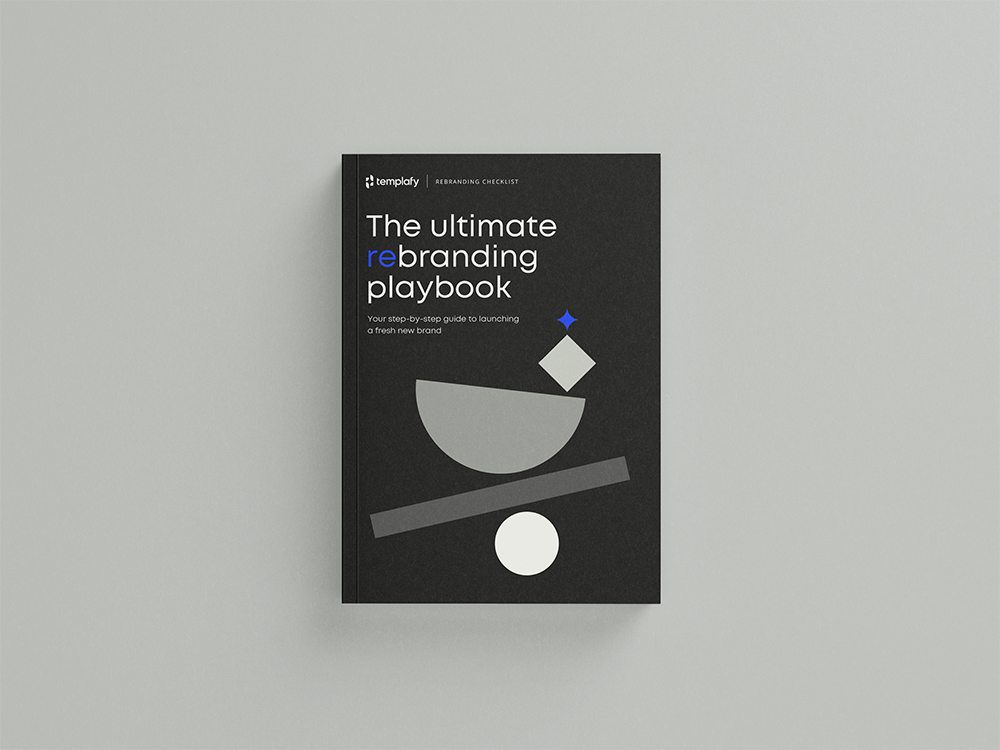The art of financial branding: Winning trust and loyalty in the financial services industry

Creating a winning and lasting brand is all about building trust.
And if your company is in charge of handling other people’s money or offering financial advice, this is doubly true.
In fact, almost 70% of consumers said they would only buy a product from a company they trust, with 50% saying they would pay more to a trusted brand.
But how do you make financial services—a field often seen as numbers-heavy and abstract—trustworthy and engaging? The secret lies in crafting a brand that is both strong and approachable, no matter how complex the subject matter.
Financial branding is more than a logo or a catchy tagline. It’s about creating a recognizable identity that speaks to your audience across all touchpoints. Whether it’s a fintech startup or a century-old bank, strong branding can build trust, improve customer loyalty, and boost your bottom line. Let’s dive into what makes financial branding so essential and how leading companies do it right.
What is financial branding?
At its core, financial branding refers to the process of building a cohesive identity for financial services businesses. This includes elements like messaging, visual design, and customer experience that reflect your values and resonate with your audience. The goal is simple: to stand out in a crowded market and build lasting trust with both current and potential clients.
But why is financial branding so important? In an industry where businesses offer similar services and differentiation can be challenging, strong branding helps you highlight what makes your company unique. When done effectively, financial branding can:
- Maximize marketing ROI by clearly showcasing what your company stands for
- Increase customer lifetime value (CLV) by building trust and loyalty over time
- Attract and retain clients through a consistent, memorable experience
Why is branding important in financial services?
Branding has become a strategic priority in the financial services sector, and for good reason. The industry faces unique challenges, including lingering reputational damage from the 2008 financial crisis, rising competition from digital-only players, growing concerns around data security, and disruptive innovations like blockchain, AI, and robo-advisors.
Standing out in this crowded and often mistrusted space requires a strong and authentic brand. Public perception of the financial industry remains a hurdle. For instance, a recent UK YouGov survey ranked the reputation of the financial services industry dead last out of 26 industries; even trailing behind gambling.
In this context, branding isn’t just about appearances. It’s about building trust, earning customer loyalty, and setting your business apart from the competition. Whether you’re a fintech startup or a well-established institution, a carefully crafted brand strategy can win over skeptical customers and encourage long-term loyalty.
Below, we explore some of the most innovative branding strategies in the industry—success stories from companies that got it right.
How four top financial brands found a way to stand out
Virgin Money: Reinventing a legacy brand
When Clydesdale and Yorkshire Bank Group (CYBG) took over Richard Branson’s Virgin Money in June 2018, it created the UK’s sixth largest bank with 6 million customers and a total lending capacity of 70 billion GBP. But beyond the impressive scale of the deal, the move made headlines for CYBG’s bold branding strategy: they didn’t just acquire Virgin Money—they adopted it.
Instead of stamping its own name on the venture or even co-branding financial services offerings (both of which would certainly grow CYBG’s brand image and presence in the market) CYBG committed to rebranding all of its operations under the Virgin Money name. CYBG agreed to license the Virgin Money brand for £12 million annually, a fee that rose to £15 million by 2022. The investment was a clear signal that CYBG wanted to leverage the strength of the Virgin name, rather than relying on its pre-existing brand identity.
It’s important to acknowledge that the Virgin Money brand wasn’t always the powerhouse financial brand it is today. While Virgin is one of the world’s most recognizable brands, Virgin Money itself faced huge challenges with its takeover of Northern Rock in 2011. Branson and his team had their work cut out for them, operating within an environment of huge consumer backlash and the publicized fact that it had zero credentials as a banking service—not a great look for a financial brand.
So, how did Virgin Money overcome these obstacles and position itself as a trusted banking brand? The answer lies in a brand-first strategy. Under Richard Branson’s leadership, Virgin Money launched a £10 million ad campaign built around Virgin’s reputation for putting customers first. The campaign promised “a better kind of bank,” one that focused on customer service instead of cost-cutting, a refreshing alternative to the public’s perception of the banking industry at the time.
For the next seven years, Virgin Money would continue to refresh and update its brand to remain competitive in its market and strengthen its position in the banking industry.
Key takeaways
- Invest in branding: Virgin Money’s investment in advertising and trust-building campaigns paid off, transforming its reputation and market position.
- Leverage brand heritage: Highlighting Virgin’s established legacy helped differentiate Virgin Money in a skeptical market.
- Branding can outshine products: In competitive markets, strong branding can become more valuable than the products themselves.
Additional content
Considering a rebrand for your organization?
Are you prepared to elevate your brand to new heights? Don’t miss a step in your new brand launch.


Monzo: Leading with user experience
When it comes to digital financial services, branding goes beyond logos and colors—it’s woven into every click, swipe, and interaction of the user experience. Success depends on creating digital solutions that are not just visually appealing, but truly valuable and easy to use.
Take Monzo, the digital-only banking app that’s revolutionizing personal banking. With 5 million users as of 2021, Monzo has built a brand that has customer experience at its heart, differentiating it well from big banks where personal banking often feels secondary to investment services.
Monzo has taken aim at the closed-on-weekends, call-center-hold-music, fill-in-six-forms-to-change-your-address world of high street banking by creating a mobile-first digital bank. Instead, Monzo has created a mobile-first digital bank tailored to modern, tech-savvy consumers who value convenience above all else and see waiting in line at a branch as a thing of the past.
What makes Monzo’s branding strategy powerful is how perfectly it aligns with their product experience. Their catchy, modern name, similar to digital giants like Uber and Google, is just the beginning. The real brand magic happens in their app, where every feature reinforces their “bank of the future” positioning. Simple swipes replace lengthy phone calls, instant notifications eliminate paper statements, and routine tasks that once took days now happen in seconds. This seamless experience shows customers that Monzo truly delivers on its promise of banking built around them.
Key takeaways
- Focus on user experience: Seamless digital interactions are central to Monzo’s brand identity.
- Reflect the product in the brand: Monzo’s branding reinforces its innovative, customer-first positioning.
- Design for the digital era: Prioritize usability and performance to attract and retain a tech-savvy audience.
NatWest: Balancing tradition with innovation
For established banks, the challenge isn’t creating a brand—it’s staying relevant in a fast-changing industry. NatWest’s recent rebranding story shows how traditional financial institutions can successfully modernize while maintaining their trusted identity.
NatWest, formed in 1986 through the merger of National Provincial and Westminster Bank, recognized the need to appeal to today’s digital-first customers. The bank partnered with design agency FutureBrand to refresh its brand identity while preserving its heritage.
The transformation went beyond just updating their services. NatWest expanded from traditional in-branch banking to offer a full range of digital products, all while maintaining a consistent brand experience across every touchpoint.
Working with design agency FutureBrand, NatWest took inspiration from its old 2D company logo design to update the brand’s entire corporate entity. The new look started with an animated 3D logo and tricolor palette and extended to a huge range of on-brand assets. This fresh, playful look better connects with digitally-savvy customers while respecting the bank’s established history.
These visual assets go far beyond NatWest’s website and customer portals. They’re integrated into every consumer touchpoint, from bank statements and in-store signage to social media, TV ads, tote bags, and brochures. By maintaining consistency across all channels, NatWest ensures its brand feels unified, modern, and relevant, no matter how or where customers engage with it.
Key takeaways
- Consistency is key: Unified branding across all channels builds trust and credibility.
- Adapt heritage for modern audiences: NatWest preserved its legacy while embracing a digitally optimized identity.
- Visuals matter: A strong visual identity can breathe new life into established brands.
How BDO Norway maintains a unified brand worldwide
“All employees have access to updated and correct content, and we are able to ensure that all disclaimers and general terms are up to date. This saves us a lot of time.”

Ove Forseth
Brand Manager, BDO Norway
BDO Norway: Elevating brand consistency across borders
Brand trust is built on consistency. In the financial services sector, even small off-brand experiences can harm a company’s reputation, undermining client confidence and creating unnecessary friction.
As a leading advisory and accounting firm, BDO Norway faced significant challenges in maintaining consistent branding across its global offices. The firm recognized that inconsistencies in templates, document designs, and branding elements were affecting its ability to present a unified and professional identity to clients.
To tackle this issue, BDO Norway partnered with Templafy to bring structure and consistency to its branding processes. By integrating Templafy directly into Microsoft Office, employees could access updated branding assets and templates directly within their workflows, ensuring consistency in all communications.
This transformation not only improved operational efficiency, but also reinforced client trust. BDO Norway’s ability to present a consistent brand image across borders enhanced its reputation as a professional and reliable advisory firm.
Key takeaways
- Centralize brand assets: Simplify access to branded materials to ensure consistency across all teams and offices.
- Enhance efficiency: Integrated solutions like Templafy save time while ensuring brand compliance.
- Build trust through consistency: A unified brand identity strengthens client relationships and boosts credibility.
financial branding
Five steps towards a new financial branding strategy
Want to build your own successful financial brand? Start with these five steps:
- Understand the legal landscape
Navigating the complex legal and regulatory environment is crucial for financial services. Your branding should reflect your knowledge and commitment to compliance, which helps build trust. - Define your brand mission
A strong mission statement communicates your values and objectives. Make sure it aligns with your audience’s needs and highlights how your services solve their pain points. - Highlight your unique selling points (USPs)
What makes your business different? Whether it’s exceptional customer service or innovative technology, clearly communicate your USPs to stand out. - Prioritize user-friendly design
Visuals matter, especially in finance. A clean, intuitive design improves accessibility and helps customers feel confident using your services. - Stay consistent
Consistency across all touchpoints—from your website to your marketing material—reinforces your brand identity and builds trust.
Why strong financial branding matters
Financial branding isn’t just about appearances, it’s about building meaningful relationships and fostering trust. In a field as competitive and reputation driven as financial services, a strong, consistent brand identity is essential. When customers trust your brand, they’re more likely to choose your services, stay loyal over time, and even recommend your business to others.
Taking inspiration from successful industry leaders, you can craft a branding strategy that not only captures attention but also drives measurable business results. Whether you’re modernizing a legacy brand or launching a new fintech venture, trust, consistency, and a focus on your customers are the core elements of effective financial branding.
Ready to elevate your brand?
Check out our other resources on branding for financial services firms. Discover how Templafy can help your financial brand stand out.



